Perle IDS-710CT Managed Industrial Ethernet Switches
10-port Gigabit DIN Rail Switches with fixed fiber
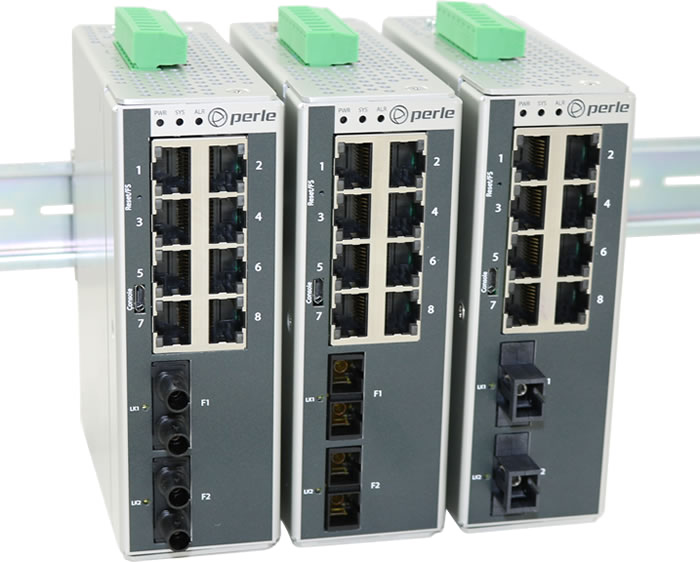






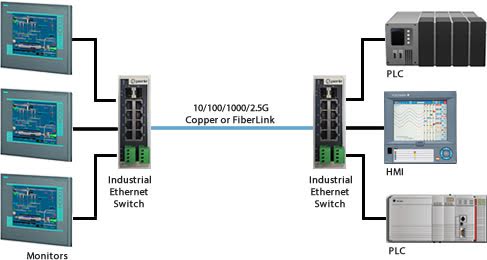
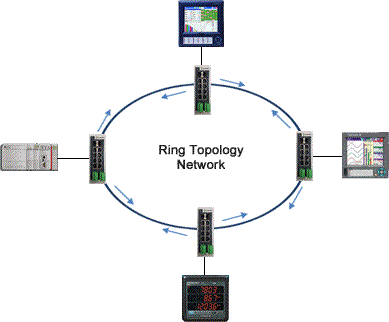
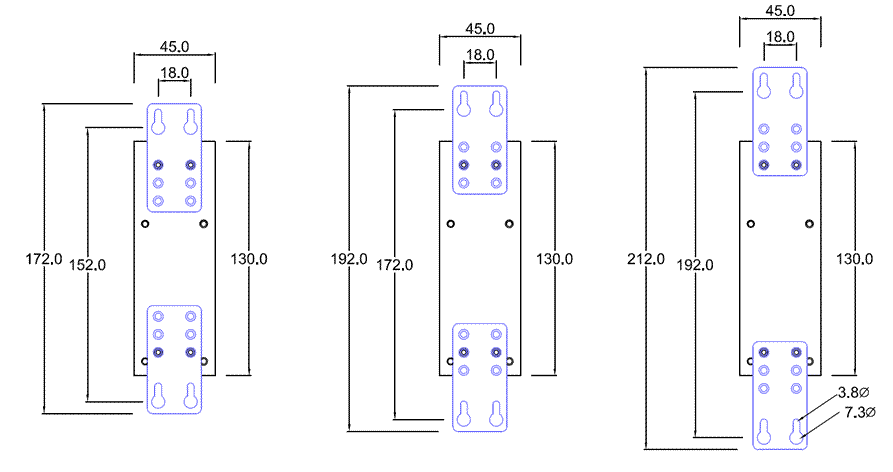
- 8 x 10/100/1000Mbps RJ45 Ethernet Ports
- 2 x Gigabit (1000Mbps) SC/ST Fiber ports
- PROFINET and Modbus TCP protocols are supported for monitoring and device management
- Ring Protocol MRP (IEC 62439-2) has <10ms recovery time
- STP/RSTP/MSTP for network redundancy
- Advanced Security and IT management features: TACACS+, RADIUS, 802.1x, SSH, SNMPv3, and H™PS
- IEEE 1588 V1 and V2 PTP for microsecond accuracy
- Advanced protocols to optimize the performance and intelligence of the network: IGMP Snooping, LLDP-MED, GVRP, Voice VLANs, MSTP, GMRP, and IPv6 MLD Snooping
Ethernet-Ports stehen für die Vernetzung von Gigabit- und Fast-Ethernet-Geräten zur Verfügung. Die beiden 1000Base-X-Glasfaseranschlüsse können Gigabit-Ethernet-Entfernungen über Glasfaser auf bis zu 160 km verlängern.
Der Einsatz von Glasfasern ist in Umgebungen, in denen häufig starke elektromagnetische Störungen auftreten, wie z. B. in Industrieanlagen, unerlässlich. Diese Störungsart kann bei kupferbasierten Ethernet-Verbindungen zur Datenbeschädigung führen. Daten, die über ein LWL-Kabel übermittelt werden, sind jedoch für diese Störung unempfindlich, sodass in der gesamten Anlage optimale Datenübertragungen gewährleistet werden können.
Industrielle Ethernet-Switches von Perle sind so konzipiert, dass sie extremen Temperaturen, überspannungen, Vibrationen und Stößen standhalten, die in den Bereichen Industrieautomation, Regierung, Militär, Öl und Gas, Bergbau und Außenanwendungen auftreten. Diese robusten, lüfterlosen Switches sind gehärtet, um bei Temperaturen zwischen -10°C und 60°C hohe Zuverlässigkeit zu bieten. Oder Sie entscheiden sich für den IDS-710HP-XT, bei dem jede Komponente für den Einsatz bei Betriebstemperaturen zwischen -40°C und +70°C entwickelt und getestet wurde.
Mit mehr als 20 Modellen bietet der Perle IDS-710CT eine umfangreiche Auswahl an Steckern, Glasfasertypen, Temperaturbeständigkeiten und Betriebsabständen. Dank der einfachen Plug-and-Play-Installation, die in den Fast-Setup-Funktionen verfügbar ist, werden Ihre Ethernet-Geräte sofort vernetzt. Die Command Line Interface (CLI), über In-Band Telnet oder dem Out-Band seriellen Konsolenanschluss, ist für die Ingenieure eine bekannte und benutzerfreundliche Schnittstelle, die nach CCNA (Cisco Certified Network Associate) und CCNP (Cisco Certified Network Professional) ausgebildet wurden.
Die IDS-710 Managed Switches verfügen über erstklassige Funktionen für Unternehmensumgebungen, die umfangreiche Sicherheits-, QoS- und Netzwerkintegrationsfunktionen erfordern. Sie können mit einer IPv6-Adresse verwaltet werden und unterstützen umfangreiche Managementfunktionen, darunter MRP (IEC62439-2), PROFINET, Modbus TCP, Management VLAN, Management Access Lists, Passwortstärkenanforderungen, RMON, N:1 Port-Spiegelung und lokales Alert-Protokoll.
Alle Perle Industrial Ethernet Switches verwenden nur hochwertige Komponenten von führenden Chip-Herstellern, die die höchste Langlebigkeit und Zuverlässigkeit gewährleisten. Darüber hinaus verfügen alle Geräte über ein korrosionsbeständiges Aluminiumgehäuse und doppelt redundante Stromeinspeisung, die Verpolungs- und überstromschutz bietet.
Funktionen des IDS-710CT Industriellen Managed Switch mit Hutschienenmontage

Der Einsatz von Glasfasern ist in Umgebungen, in denen häufig starke elektromagnetische Störungen auftreten, wie z. B. in Industrieanlagen, unerlässlich. Diese Störungsart kann bei kupferbasierten Ethernet-Verbindungen zur Datenbeschädigung führen. Daten, die über ein LWL-Kabel übermittelt werden, sind jedoch für diese Störung unempfindlich, sodass in der gesamten Anlage optimale Datenübertragungen gewährleistet werden können.
Industrielle Ethernet-Switches von Perle sind so konzipiert, dass sie extremen Temperaturen, überspannungen, Vibrationen und Stößen standhalten, die in den Bereichen Industrieautomation, Regierung, Militär, Öl und Gas, Bergbau und Außenanwendungen auftreten. Diese robusten, lüfterlosen Switches sind gehärtet, um bei Temperaturen zwischen -10°C und 60°C hohe Zuverlässigkeit zu bieten. Oder Sie entscheiden sich für den IDS-710HP-XT, bei dem jede Komponente für den Einsatz bei Betriebstemperaturen zwischen -40°C und +70°C entwickelt und getestet wurde.
Mit mehr als 20 Modellen bietet der Perle IDS-710CT eine umfangreiche Auswahl an Steckern, Glasfasertypen, Temperaturbeständigkeiten und Betriebsabständen. Dank der einfachen Plug-and-Play-Installation, die in den Fast-Setup-Funktionen verfügbar ist, werden Ihre Ethernet-Geräte sofort vernetzt. Die Command Line Interface (CLI), über In-Band Telnet oder dem Out-Band seriellen Konsolenanschluss, ist für die Ingenieure eine bekannte und benutzerfreundliche Schnittstelle, die nach CCNA (Cisco Certified Network Associate) und CCNP (Cisco Certified Network Professional) ausgebildet wurden.
Die IDS-710 Managed Switches verfügen über erstklassige Funktionen für Unternehmensumgebungen, die umfangreiche Sicherheits-, QoS- und Netzwerkintegrationsfunktionen erfordern. Sie können mit einer IPv6-Adresse verwaltet werden und unterstützen umfangreiche Managementfunktionen, darunter MRP (IEC62439-2), PROFINET, Modbus TCP, Management VLAN, Management Access Lists, Passwortstärkenanforderungen, RMON, N:1 Port-Spiegelung und lokales Alert-Protokoll.
Alle Perle Industrial Ethernet Switches verwenden nur hochwertige Komponenten von führenden Chip-Herstellern, die die höchste Langlebigkeit und Zuverlässigkeit gewährleisten. Darüber hinaus verfügen alle Geräte über ein korrosionsbeständiges Aluminiumgehäuse und doppelt redundante Stromeinspeisung, die Verpolungs- und überstromschutz bietet.
Funktionen des IDS-710CT Industriellen Managed Switch mit Hutschienenmontage
- Einfache Bereitstellung
- STP-, RSTP- und MSTP-Protokolle ermöglichen schnelle Wiederherstellung.
- MRP (IEC 62439-2) bietet schnelle Konvergenz in industriellen Ring-Netzen. Verhindert ein Switch-Loop-Scenario dank
- Perles P-Ring-Protokoll zum Konfigurieren eines Ring-Netzes mit gewöhnlichen Spanning Tree Protocols.
- Link Standby ist eine Verbindungswiederherstellungsfunktion für zwei Verbindungen, die eine einfache Alternative zu Spanning Tree Protocols bietet, um Verbindungsredundanz zu erreichen
- Gepuffertes Echtzeituhr-Backup
- Web Device Manager, Telnet/SSH, H?PS-Zugriff, SNMP und Perle´s PerleView NMS ermöglichen zentralisiertes Management
- In-Band Management über seriellen RJ45- oder USB-Anschluss
- Verwendung einer Ipv4- oder Ipv6-Adresse
- Entfernbarer MicroSD-Flash für Konfigurationsdateien- und Firmware-Backup und -Wiederherstellung
- Lüfterlos, keine beweglichen Teile
- Dual-Stromeinspeisung Anschluss an separate Energiequellen, um Redundanz zu gewährleisten.
- Verpolungsschutz
- überstromschutz
- Hält den in industriellen Umgebungen vorkommenden Vibrationen und Erschütterungen stand
- Hohe Drahtgeschwindigkeit, schnelles Store-and-Forward-Switching
- Autosensing für Geschwindigkeit und Duplex
- Auto-mdi/mdix-Crossover ist für gerade (straight) und gekreuzte (cross-over) Kabel geeignet
- Zero-Touch Discovery über Dynamic Host Control Protocol (DHCP), Perles ?Schnelleinrichtung? für die erste Installation, bietet eine einfache Bereitstellung in Ethernet-Umgebungen
Sicherheit
- 802.1X, Port-Sicherheit, Secure Shell (SSHv2); SNMPv3 bietet verschlüsselten Administrator-Traffic während CLI- und SNMP-Sessions; TACACS+ und RADIUS Authentifizierung erleichtert die zentralisierte Kontrolle und beschränkt unberechtigte Nutzer.
Belastbarkeit
Handhabbarkeit
Protokoll-Unterstützung für Industrial Ethernet
- Perle IDS-710 Switches, verwaltbar mit PROFINET oder Modbus TCP über PLC, NMS, HMI oder SCADA-Systeme.
Zuverlässiger Betrieb
Ethernet-Leistung in Echtzeit

| Performance Features | |
| Port Auto-sensing | Auto-sensing of port speed and auto-negotiation of duplex on all switch ports for optimizing bandwidth |
| Auto MDI/MDIX | Medium-dependent interface crossover (Auto-MDIX) capability on 10/100 and 10/100/1000 mbps interfaces that enables the interface to automatically detect the required cable type (straight thru or crossover) and to configure the connection appropriately |
| 802.3x flow control | IEEE 802.3x flow control on all ports. (The switch does not initiate pause frames) |
| Link Aggregation protocol | Increase port bandwidth through link aggregation. Support is provided for IEEE 802.3ad using Link Aggregation Control Protocol (LACP). Up to eight (8) ports in a single port-channel |
| Static Link Aggregation | Provides the ability to operate under a static (manual) link aggregation scenario (where the remote switch peer does not support LACP) |
| Storm Control | Storm control prevents traffic on a LAN from being disrupted by a broadcast, multicast, or unicast storm on one of the physical interfaces. A LAN storm occurs when packets flood the LAN, creating excessive traffic and degrading network performance. Storm Control enables limits to be placed on broadcast, multicast and unicast traffic |
| Bandwidth Control Monitoring | Bandwidth Control provides the ability to monitor the flow rates on a per port basis and the ability to cause an SNMP trap to occur (selectable) and put the port in an ´error-disabled´ state |
| Static MAC Addressing | This feature enables the manual configuration of the MAC addresses on a per port basis. Flooding is prevented by retaining MAC entries across a reboot of the switch. |
| Port Blocking | Port Blocking provides the ability to block the flooding of unknown layer 2 unicast and multicast traffic on an Interface |
| IPV4 IGMP Snooping | Internet Group Management Protocol (IGMP) constrains the flooding of multicast traffic by dynamically configuring Layer 2 interfaces so that multicast traffic is forwarded to only those interfaces associated with IP multicast devices. IGMPv1, v2, v3, IGMP snooping querier mode, IGMP report suppression, topology change notification and robustness variable features are supported |
| IPV6 MLD Snooping | With Multicast Listener Discovery (MLD) snooping, IPv6 multicast data is selectively forwarded to a list of ports that want to receive the data, instead of being flooded to all ports in a VLAN. This list is constructed by snooping IPv6 multicast control packets |
| GMRP | GARP Multicast Registration Protocol (GMRP) provides a constrained multicast flooding facility similar to IGMP snooping. GMRP provides a mechanism that allows bridges and end stations to dynamically register group membership information with the MAC bridges attached to the same LAN segment and for that information to be disseminated across all bridges in the Bridged LAN that supports extended filtering services |
| Port Quick Disconnect | In some network environments, it is desirable to move an Ethernet from one switch port to another and have the device come on-line quickly. The Port Quick Disconnect feature if enabled, provides an immediate age-out of the MAC addresses learned on the port when the port status changes from a link-up to a link-down state |
| Manageability Features | |
| Network Assist | This Windows-based desktop application helps busy IT managers configure and monitor the status of deployed Perle devices. |
| Web Device Manager | The Perle Web Device Manager is an embedded Web based application that provides an easy to use browser interface for managing the switch. Operates with both http and secure https streams. Unlike competitive products, Java applet technology is not required or used |
| Command Line Interface (CLI) | A familiar text-based Command Line Interface that is based on accepted industry standard syntax and structure. Ideal for CCNA and CCNP trained engineers, this interface is available via in-band Telnet/SSH or the out-band serial console port |
| Industrial Ethernet Protocols | Manage Perle IDS-500 switches via PLC, NMS, HMI or SCADA systems using PROFINET or Modbus TCP. |
| SNMP | Manage the switch with an SNMP compatible management station that is running platforms such as HP Openview or Perle´s PerleVIEW NMS. SNMP V1, V2C, V3 |
| PerleVIEW | PerleVIEW is Perle´s SNMP-based network management system that provides a view of the network with a large scale of Perle networking devices. |
| IPv6 | Manage with an IPv4 or IPV6 address |
| DHCP Client Auto-Configuration | Automates configuration of switch information such as IP address, default gateway, hostname and Domain Name System (DNS) as well as TFTP server names. Firmware and configuration file locations are provided through options 54, 66, 67, 125 and 150 |
| DHCP Relay | DHCP Relay is used for forwarding requests from DHCP clients when they are not on the same physical subnet. As a DHCP relay agent the switch operates as a Layer 3 device that forwards DHCP packets between clients and servers. |
| DHCP Option 82 Insertion | Normally used in metro or large enterprise deployments DHCP Option 82 insertion is used to provide additional information on ?physical attachment? of the client. As per RFC 3046, option 82 enables additional pre-defined information to be inserted into the DHCP request packet (for DHCP Servers that support this option) |
| DHCP Server | For networks where a central DHCP server is not provided, the switch can provide a DHCP Server function for allocation of IP addresses to the connected devices |
| DHCP server port-based address allocation | When Ethernet switches are deployed in the network, they offer connectivity to the directly connected devices. In some environments, such as on a factory floor, if a device fails, the replacement device must be working immediately in the existing network When configured, the DHCP server port-based address allocation feature ensures that the same IP address is always offered to the same connected port even as the client identifier or client hardware address changes in the DHCP messages received on that port |
| LLDP | LLDP-Link Layer Discovery Protocol as per IEEE 802.1AB is a neighbor discovery protocol that is used for network devices to advertise information about themselves to other devices on the network. This protocol runs over the data-link layer, which allows two systems running different network layer protocols to learn about each other (via TLVs - Type-Length-Value) |
| LLDP-MED | LLDP Media Endpoint Discovery is an extension to LLDP that operates between endpoint devices such as IP phones and network devices such as switches. It specifically provides support for voice over IP (VoIP) applications and provides additional TLVs for capabilities discovery, network policy, Power over Ethernet, inventory management and location information |
| NTP | The switch can provide the time to NTP/SNTP capable client devices (or other switches, etc). You can run the SNTP client and the NTP server concurrently on your system. Therefore you can obtain time from an outside source and serve that time to the devices connected to the switch. |
| IEEE 1588 - PTP (Precision Time Protocol) |
|
| File Download | Firmware can be transferred via TFTP, SCP, H?P, H?PS or via insertion of a microSD card. Text-based files that can be created or edited by common text editors. |
| Secure Copy Protocol (SCP) | SCP based on the Secure Shell (SSH) protocol, is a means of securely transferring computer files between a local host and a remote host or between two remote hosts. |
| Availability and Redundancy Features | |
| Spanning Tree Protocol (STP) | IEEE 802.1D now incorporated in IEEE 802.1Q-2014, STP prevents bridge loops and the broadcast radiation that results from them. Other Spanning Tree features include BPDU guard, Root guard, loop guard, root guard and TCN Guard |
| Rapid Spanning Tree Protocol (RSTP) | Interoperable with STP, RSTP (IEEE 802.1w) takes advantage of point-to-point wiring and provides rapid convergence of the spanning tree. Reconfiguration of the spanning tree can occur in less than 1 second |
| Multiple Spanning Tree Protocol (MSTP) | Originally defined in IEEE 802.1s and now incorporated IEEE 802.1Q-2014, defines an extension to RSTP for use with VLANs. The Multiple Spanning Tree Protocol configures a separate Spanning Tree for each VLAN group and blocks all but one of the possible alternate paths within each Spanning Tree. |
| MRP |
|
| P-Ring | P-Ring provides an easy to use method for configuring a ring network using standard spanning tree protocols. Prevents a switch loop scenario in a ring topology. |
| Link Standby | A link recovery feature using a primary and backup link. Provides a simple alternative to spanning tree protocols for link redundancy |
| VLAN Features | |
| VLAN Range | Up to 256 VLANS across a VLAN ID range of 1 to 4000 |
| GVRP | Generic Attribute Registration Protocol (GARP) VLAN Registration Protocol (GVRP) is an application defined in the IEEE 802.1Q standard that allows for the control of VLANs. With GVRP, the switch can exchange VLAN configuration information with other GVRP switches, prune unnecessary broadcast and unknown unicast traffic, and dynamically create and manage VLANs on switches that are connected through 802.1Q trunk ports. |
| Voice VLANs | Voice VLANs enables one to separate, prioritize, and authenticate voice traffic moving through your network, and to avoid the possibility of broadcast storms affecting VoIP (Voice-over-IP) operation. With an IP Phone connected to an access port, a switchport voice VLAN enables the use of one VLAN for voice traffic and another VLAN for data traffic from an Ethernet device attached to the phone |
| VLAN Interfaces | Perle switches provide the ability to configure management VLAN interfaces. This enables network administrators to access the switch´s management interface from separate VLAN networks |
| Security Features | |
| IEEE 802.1X |
|
| Login Banner and MOTD |
|
| Password Strength Checking | Many organizations require stringent management over the strength level of their passwords. When enabled, Perle extends this capability to local passwords stored on the switch enforcing strong passwords to be used. |
| Port Security - Secure MAC Addresses | This port security feature provides the ability to restrict input to an interface by limiting and identifying MAC addresses of the stations allowed to access the port (Access or Trunk) and will take specific actions when violations occur. |
| Management ACL | Restricting access to management functions can be configured by protocol or IP address selection are provided. This enables administrators to allow only specific workstations using particular protocols to be able to access the management functions of the switch |
| RADIUS Management Access Authentication | AAA support for RADIUS servers that Authenticate, Authorize and Account management sessions |
| TACACS+ Management Access Authentication | AAA support for TACACS+ servers that Authenticate, Authorize and Account management sessions |
| Secure Socket Layer (SSL) | SSL provided for secure browser sessions using H?PS |
| Secure Shell (SSH) | SSH provided for secure SSH session for CLI and SCP file transfer sessions |
| SNMPV3 | Support provided for secure version 3 of SNMP |
| Quality of Service (QoS) and Class of Service (CoS) Features | |
| Classification | IP ToS/DSCP and IEEE 802.1p CoS |
| Congestion Avoidance | Weighted Fair Queuing or Strict Queuing |
| Egress Queues and scheduling |
|
| Monitoring Features | |
| Port Mirroring | N:1 Port Mirroring is a method of monitoring network traffic. With port mirroring enabled, the switch sends a copy of one or more ports to a predefined destination port. Selection of Transmit, Receive frames or both can be made |
| RMON | RMON statistics provided for statistics, history, alarms and events for network monitoring and traffic analysis |
| Syslog | Facility for logging systems messages to an external SYSLOG server |
| Alert Log | Facility for logging systems messages locally |
| Traceroute | Layer 2 traceroute to identify the path that a frame takes from source to destination |
| Virtual cable test | A test that enables the detection of potential copper cabling issues such as pair polarity pair swaps and excessive pair skew as well as any opens, shorts or any impedance mismatch. Will report the distance in the cable to the open or short. |
| SFP Diagnostics and Monitoring | Interface provided to the SFP´s Digital Optical Monitoring facility to monitor operational or physical operating status of the SFP and link |
| Power Supply Monitoring | Provides the status of power supplies of the switch |
| Internal Temperature Monitoring | The internal ambient temperature of the switch can be obtained from the management interfaces |
| Alarm Processing | The switch can monitor global switch conditions as well as individual ports. These alarms can be configured to send messages to :
Global Status Monitoring Alarms
Port Status Monitoring Alarms
|
| Alarm Relay | When enabled, energizes the built-alarm relay triggering an external alarm circuit such as a bell, light or other signaling device according to alarm conditions set |
| Management and Standards | |
| IEEE Standards |
|
Hardware Features & Technical Specifications: IDS-710CT Industrial Managed Ethernet Switches
| Power | |
| Dual Power Input | Both inputs draw power simultaneously. If one power source fails, the other live source can, acting as a backup, supply enough power to meet the operational needs of the switch. 12/24/48 VDC Nominal. (9.6 to 60 VDC) Common negative |
| Power & Alarm Connector | 8-Pin Removable Terminal Block. Grounding screw on metal chassis |
| Maximum Current Consumption @24 vDC | 0.25 amps |
| Maximum Power Consumption @24 vDC | 6 watts |
| Overload Current Protection | Fused overload current protection |
| Reverse polarity protection | The positive and negative inputs can be reversed providing safe and simple power connectivity. |
| Access Ports | |
| USB Serial Console port | MicroUSB Type B female port for serial console management. Used as an alternative port for out-of-band management connections |
| RJ45 |
|
| Gigabit Fiber Port |
|
| Alarm Relay | |
| |
| Switch Properties | |
| Microprocessor Frequency | ARM Cortex A8 600MHZ |
| RAM & Flash | 4GB DDR3 & 4GB eMMC |
| Standards |
|
| Processing Type | Store and Forward |
| MAC Address Table Size | 8K |
| VLAN ID range | 1 to 4000 |
| IGMP groups | 1024 |
| Packet Buffer Memory | 1 Mbit |
| Jumbo Frame Size | 10 KB |
| Indicators | |
| System | Indicates whether the switch O/S is operating normally |
| RJ45 Ethernet | These integrated colored LEDs indicate link, activity and speed for each port. |
| Fiber Link | Fiber link LED indicates Link and Data Activity |
| Alarm | The alarm LED (Red) will be turned on under alarm conditions |
| Reset | Once pushed all 4 LEDs are solid Red for 3 seconds |
| Environmental Specifications | |
| MTBF | 250009 Hours Calculation model based on MIL-HDBK-217-FN2 @ 30°C |
| Operating Temperature Ranges |
|
| Storage Temperature Range | -40°C to 85°C (-40°F to 185°F) |
| Operating Humidity Range | 5% to 90% non-condensing |
| Storage Humidity Range | 5% to 95% non-condensing |
| Maximum Heat Output | 27 Btu/hr |
| Operating Altitude | Up to 3,048 meters (10,000 feet) |
| Chassis | Metal with an IP20 ingress protection rating |
| Din Rail Mountable | DIN Rail attachment included. Mounts to standard 35 mm DIN rail in accordance with DIN EN 60175. Removable to accommodate optional Panel/Wall mount kit |
| Product Weight and Dimensions | |
| Weight | 0.35 kg / 0.77 lb |
| Dimensions (W x H x D) | 45 x 93 x 109 mm / 1.77 x 3.66 x 4.29 in |
| Packaging | |
| Shipping Weight | 0.50 kg / 1.1 lb |
| Shipping Dimensions | 25 x 17 x 7 cm / 9.84 x 6.7 x 2.75 in |
| Standards and Certifications | |
| Laser Safety |
|
| Safety |
|
| Emissions |
|
| EMC and Immunity |
|
| Environmental | Reach, RoHS and WEEE Compliant |
| Other |
|
| Contents Shipped |
|
Ordering Information
| Product Name | Product Description |
|---|---|
| IDS-710-C2MS05U | - Industrial Managed Ethernet Switch with 10 ports: 8 x 10/100/1000Base-T RJ-45 ports and 2 x 1000Base-BX 1310nm TX /1550nm RX, Multimode, Single-Fiber (Bi-directional) with SC Simplex Connector [500 m/1640 ft]. -10 to 60C operating temperature. PRO software feature set |
| IDS-710-C2MS05D | - Industrial Managed Ethernet Switch with 10 ports: 8 x 10/100/1000Base-T RJ-45 ports and 2 x 1000Base-BX 1550nm TX /1310nm RX, Multimode, Single-Fiber (Bi-directional) with SC Simplex Connector [500 m/1640 ft]. -10 to 60C operating temperature. PRO software feature set |
| IDS-710-C2MD05-XT | - Industrial Managed Ethernet Switch with 10 ports: 8 x 10/100/1000Base-T RJ-45 ports and 2 x 1000Base-SX, 850nm Multimode, Dual fiber with SC Duplex Connector [550m/1804 ft]. -40 to 70C Industrial extended operating temperature. PRO software feature set |
| IDS-710-T2MD05-XT | - Industrial Managed Ethernet Switch with 10 ports: 8 x 10/100/1000Base-T RJ-45 ports and 2 x 1000Base-SX, 850nm Multimode, Dual fiber with ST Duplex Connector [550m/1804 ft]. -40 to 70C Industrial extended operating temperature. PRO software feature set |
| IDS-710-C2MD2 | - Industrial Managed Ethernet Switch with 10 ports: 8 x 10/100/1000Base-T RJ-45 ports and 2 x 1000Base-LX, 1310nm Extended Multimode, Dual fiber with SC Duplex Connector [2km/1.2 mi]. -10 to 60C operating temperature. PRO software feature set |
| IDS-710-T2MD2 | - Industrial Managed Ethernet Switch with 10 ports: 8 x 10/100/1000Base-T RJ-45 ports and 2 x 1000Base-LX, 1310nm Extended Multimode, Dual fiber with ST Duplex Connector [2km/1.2 mi]. -10 to 60C operating temperature. PRO software feature set |
| IDS-710-C2SD10-XT | - Industrial Managed Ethernet Switch with 10 ports: 8 x 10/100/1000Base-T RJ-45 ports and 2 x 1000Base-LX/LH, 1310nm, Single mode, Dual fiber with SC Duplex Connector [10 km/6.2 mi]. -40 to 70C Industrial extended operating temperature. PRO software feature set |
| IDS-710-T2SD10-XT | - Industrial Managed Ethernet Switch with 10 ports: 8 x 10/100/1000Base-T RJ-45 ports and 2 x 1000Base-LX/LH, 1310nm, Single mode, Dual fiber with ST Duplex Connector [10 km/6.2 mi]. -40 to 70C Industrial extended operating temperature. PRO software feature set |
 Kunden, die diesen Artikel gesehen haben, sahen auch
Kunden, die diesen Artikel gesehen haben, sahen auch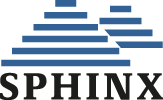













 Eigenschaften
Eigenschaften Beschreibung
Beschreibung Weitere Informationen
Weitere Informationen



 Eigenschaften
Eigenschaften Beschreibung
Beschreibung PDF
PDF